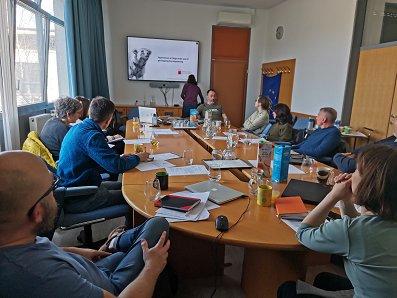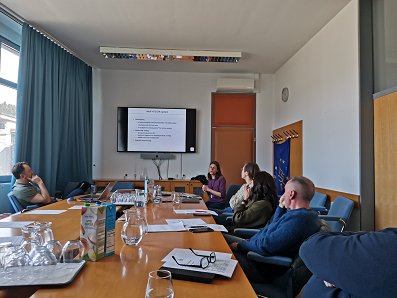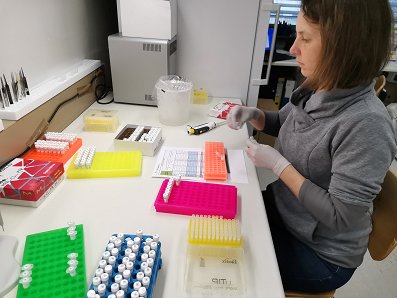The workshop, that is taking place on April 4-5, 2023, aims to update researchers and technical staff from genetic laboratories from at least four European countries (Italy, Austria, Germany, Switzerland) on recent developments and workflow for implementing the HTS STR genotyping approach in their labs for standardized genetic monitoring of wolves.
The workshop will be led by Dr. Marta De Barba, a lead researcher in this project from the conservation genetics team of BF. She explained that the HTS STR genotyping approach was initially developed at the Laboratoire d’Ecologie Alpine (LECA) in France to improve accuracy and efficiency of wildlife non-invasive genotyping. The research group at BF has collaborated with LECA and the University of Lausanne to further develop the method and contribute to its broad-scale implementation. The method is already being used outside of the academic sphere for the monitoring of wolf populations in Slovenia and Croatia. The new method is more cost-effective, enables rapid processing of large numbers of samples and provides a higher genotyping success than the "traditional" genotyping using capillary electrophoresis. Since the data is at the level of DNA sequence, the results are platform independent and completely transferable and comparable between laboratories.
The training workshop is being organized within the LIFE WOLFALPS EU project, where research teams from the University of Ljubljana are implementing studies to contribute to the management and conservation of wolf populations in Europe. The workshop is part of project action A5.2 and aims to train the conservation genetics laboratories of the "Genetic Wolf Alpine Group" on the new genotyping technique, as part of efforts to harmonize wolf genetic monitoring in the Alps.
In general, the workshop promises to be a valuable opportunity for researchers and technical staff to learn about the latest developments in high-throughput sequencing-based microsatellite genotyping for non-invasive wolf population monitoring, so that they can implement it in their own labs.



